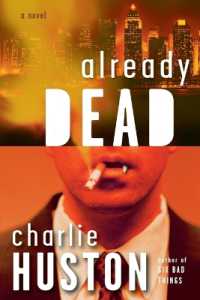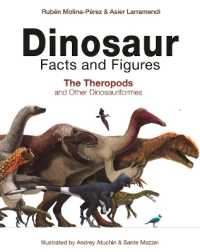- ホーム
- > 洋書
- > 英文書
- > Business / Economics
基本説明
Traces the rise of aesthetics in management studies through the papers that focus on fashion, narrative, theatre, music and craft.
Full Description
Organization students and scholars are able to trace the rise of aesthetics in management studies through the papers presented in this volume. The papers are arranged for individual review or thematic explorations of aesthetic thinking; including review papers and articles that focus on fashion, narrative, theatre, music and craft. This volume is a major contribution for those seeking alternatives to rational and positivist perspectives on management and who are willing to explore those alternatives beyond the usual disciplinary bases.
Contents
Part I The Aesthetic TurnManagement: Aesthetic understanding of organizational life, A. Strati (1992); Finding form: looking at the field of organizational aesthetics, S. Taylor and H. Hansen (2005); Strategy retold: toward a narrative view of strategic discourse, D. Barry and M. Elmes (1997); Organizational kitsch, S. Linstead (2002); The labour of aesthetics and the aesthetics of organization, A. Witz, C. Warhurst and D. Nickson (2003). Part II Following and Framing Management Fashion: Rhetoric and myth in management fashion, A. Kieser; A fantasy theme analysis of Peter Senge's learning organization, B.G. Jackson (2000); Haute couture and pret-a-porter: the popular press and the diffusion of management practices, C. Mazza and J.L. Alvarez (2000); Management fashion as image-spectacle: the production of best-selling management books, T. Clark and D. Greatbatch (2004). Part III From Fashion to Fiction: Narrative and Storytelling Approaches: The storytelling organization: a study of performance in an office-supply firm, D. Boje (1991); Organizational story and storytelling: a critical review, M.E. Boyce (1996); A four times told tale: combining narrative and scientific knowledge in organization studies, B. Czarniawska (1997); Narratives of organizational identity and identification: a case study of hegemony and resistance, M. Humphreys and A.D. Brown. Part IV The Theatre and Performance of Management: Management as a performing art, I. Mangham (1990); The cultural performance of control, R. Munro (1999); Playing the part: reflections on aspects of mere performance in the customer-client relationship, H. Hopfl (2002); From dramaturgy to theatre as technology: the case of corporate theatre, T. Clark and I Mangham (2004); Spectacular metaphors: from theatre to cinema, T. Wood (2002). Part V Management Impro: Jazz and Beyond: Improvisation as a mindset for organizational analysis, K.E. Weick (1998); Creativity and improvisation in jazz and organizations: implications for organizational learning, F.J. Barrett (1998); Towards a theory of organizational improvisation: looking beyond the jazz metaphor, K. Kamoche, M.P. Cunha and J.V. Cunha (2003); The complexity of improvisation and the improvisation of complexity: social science, art and creativity, A. Montuori (2003). Part VI Crafting Management and Management Studies: Crafting strategy, H. Mintzberg (1987); Crafting organization, J. Wolfram Cox and S. Minahan (2004); Essai: on paragrammatic uses of organizational theory - a provocation, Y. Gabriel (2002); Index.








